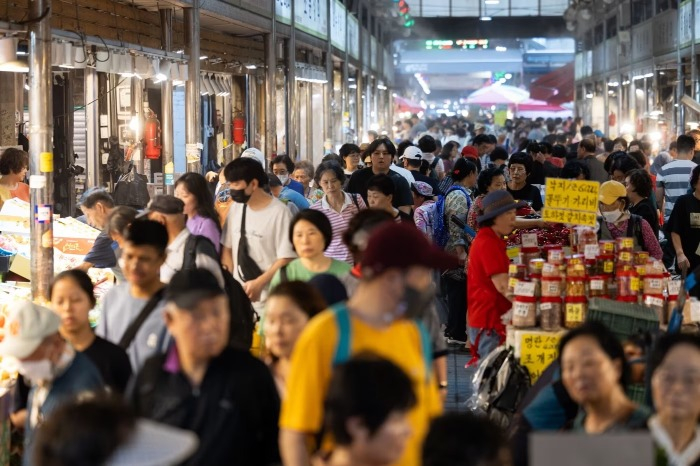South Korea’s headline inflation remained flat in April, possibly paving the way for the central bank to loosen monetary policy further to support the sagging economy.
The benchmark consumer-price index rose 2.1% from a year earlier, the same pace as in March, still nearing the bank’s annual inflation target of 2%, the country’s statistics office said Friday.
The latest print was slightly above the median forecast from 17 economists surveyed by The Wall Street Journal tipping a 2% gain.
Prices for some agricultural goods and processed foods remained higher while petroleum-product prices fell on the year for the month, according to the statistics office.
Compared with the prior month, the CPI edged up 0.1% in April, compared with the WSJ poll’s median forecast of being flat. In March, consumer prices rose 0.2% from the previous month.
Core CPI, which excludes volatile food and energy prices, rose 2.1% from a year earlier in April and increased 0.4% from the previous month. In March, it gained 1.9% on year and 0.2% on month.
The Bank of Korea last month paused the easing cycle it started in November 2024, as it gauged the impact of previous rate cuts and how best to support the economy facing a severe hit from President Trump’s sweeping tariffs.
South Korean exports, which account for nearly half its gross domestic product, continued rising in April thanks to robust demand for chips, which are exempt from tariffs, but cracks are emerging. Auto exports took a hit from Trump’s levies, and shipments of South Korean goods to the U.S. fell.
South Korea’s gross domestic product shrank 0.1% from a year earlier and 0.2% from the previous quarter in the January-to-March period, after large-scale wildfires and political turmoil over its president’s impeachment suppressed consumer sentiment and business activities.
The Bank of Korea has signaled that it will lower its growth outlook for the country in May after having cut its 2025 GDP growth forecast in February to 1.5% from 1.9%.
The central bank expects inflation to average 1.9% this year, a tad below its annual target.
With inflation subdued and growth momentum cooling in the country, most economists expect rate cuts to resume in May.
Write to Kwanwoo Jun at
Kwanwoo.Jun@wsj.com




